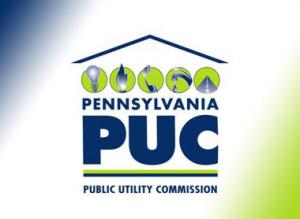Pennsylvania Eyes Capacity Release Rule Amendments

In an effort to enhance competition and encourage greater customer participation in the state's retail natural gas market, the Pennsylvania Public Utility Commission has proposed certain regulatory changes aimed at improving transparency and equity among alternative natural gas supply services. The proffered changes are the result of the commission's ongoing Natural Gas Retail Markets Investigation (RMI). The commission asserted that the modifications are intended to strengthen the competitive market by revising how capacity is assigned between natural gas local distribution companies (LDCs) and natural gas suppliers. The revised rules also address related issues, such as penalties and imbalance trading, the commission said.
The commission elaborated that in conjunction with bringing greater clarity and consistency to the market, the new rules are designed to maintain system integrity and increase reliability. According to the commission, the proposed rules facilitate accomplishment of those objectives by
- creating uniform capacity cost allocations,
- providing more tools and market pricing to handle daily balancing within the market, and
- giving market participants real-time information to augment system operations.
The commission noted that it first opened the RMI more than a decade ago after an October 2005 report it forwarded the General Assembly revealed that because few competitive gas suppliers were participating in the market, effective competition had yet to develop. Moreover, the commission observed that its RMI has faced numerous obstacles, resulting in consideration of several different iterations of rules aimed at remedying the poor market development metrics.
The commission stated that since it initiated the investigation, it had identified the lack of uniformity among LDC business standards and operating rules as a possible barrier to market entry and participation. At the same time, though, the commission acknowledged that the record in its RMI contained insufficient data to support a need for standardizing all LDC business practices.
However, the commission said, in the most recent phase of its investigation it had determined that further development of a competitive retail market depended on several critical factors, including assignment of capacity and use of storage assets; system balance, tolerances, and penalties; creditworthiness requirements; standardization of supplier tariffs among LDCs; and electronic data protocols. Of those elements, the commission chose to emphasize the capacity release component, which generally is based upon the system average cost of capacity.
Expounding on its focus on capacity release practices, the commission related that in most service territories, an LDC's capacity releases for shopping customers are in turn paid for by the competitive suppliers providing service. Thus, many LDCs have voiced concern about the risks of possible supplier default and an associated inability to recover their costs. Competitive suppliers, on the other hand, have questioned the feasibility of peak-day designs and have queried whether unfettered access to all capacity assets might impede market participation.
Taking such positions under advisement, the commission commenced a review of current LDC operations. After analyzing their various practices, the commission pointed to the capacity release protocol employed by Peoples Natural Gas Company (PNGC) as a model for implementation statewide.
The commission said that PNGC releases capacity assets to alternative suppliers the same as to other LDCs, except instead of the suppliers paying for it, all customers pay the average system cost of capacity (irrespective of their participation within the market). According to the commission, theoretically, an identical dollarfor- dollar cost recovery will result regardless of whether an LDC's cost of capacity is reimbursed by customers or suppliers in full. But the commission concluded that the structure utilized by PNGC could offer a benefit to all market participants.
The commission averred that one likely benefit to the market would be risk reduction. That is, it said, while both LDCs and competitive suppliers always face risk associated with capacity costs going unpaid, LDCs experience even more risk when competitive suppliers are the defaulting party. The commission explained that because LDCs do not earn a return on the work they do to procure gas, any used assets could be a liability to the utility inasmuch as unpaid supplier capacity costs would end up falling on customers (more specifically, nonshopping customers).
The commission posited that not only would PNGC's plan mitigate risk for LDCs, but it also could reduce risk for suppliers, by eliminating the need to pay for capacity upfront or to recover a certain dollar amount in order to break even, thereby increasing incentives to offer innovative or lowerpriced services. Re Natural Gas Distribution Company Business Practices, L-2017-2619223, Aug. 31, 2017 (Pa.P.U.C.).



